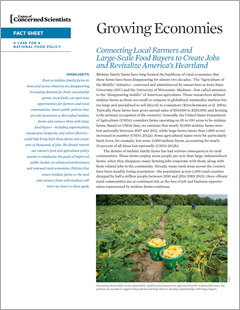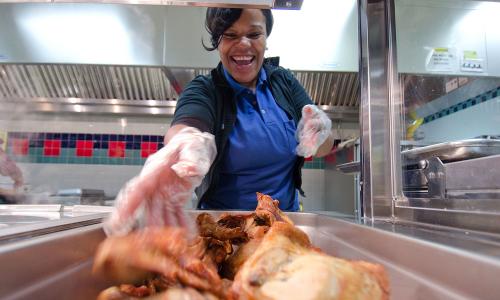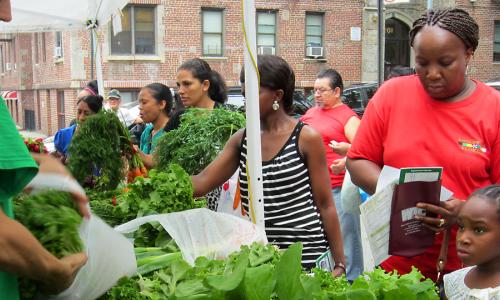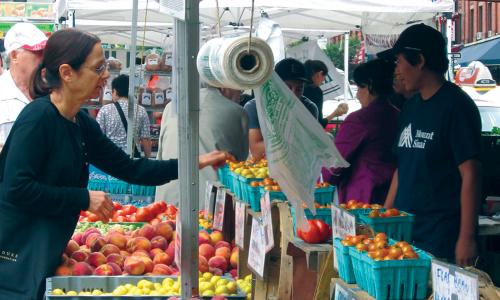Midsize family farms—historically the backbone of rural economies in the United States—have been disappearing for almost two decades, replaced by large, industrialized farms. When they disappear, many jobs evaporate with them. Once-vibrant rural communities are at continued risk as the loss of jobs and business opportunities represented by midsize farms continues.
The good news is that the solution to this problem may lie close to home: when large-scale food buyers such as supermarkets and hospitals purchase their fruits and vegetables from local farmers, they create a market niche that midsize farms are ideally suited to fill. Policies designed to help midsize farms thrive and connect them with these buyers could reverse the decline of the midsize family farm and give rural communities a much-needed economic boost.
Our 2016 report, Growing Economies, uses Iowa as a test case to show how recent research supports this idea. The report also recommends policy changes that could facilitate the revival of midsize farms.
Midsize farms are good for rural communities
Research has shown that midsize farms provide multiple economic benefits for their communities:
- They employ more people per acre than large, industrialized farms.
- They are more likely to purchase inputs locally, keeping more money in their local economies.
- Areas having more moderate-size farms have lower poverty and unemployment rates, higher average household incomes, and greater socioeconomic stability, while larger farms are associated with lower incomes, more poverty and economic inequality, less active "main streets" with fewer retail businesses, and less money spent in the community.
Midsize farms have environmental benefits, too. With fewer acres to manage, farmers are more in tune with subtleties of soil type, climate, pest populations, and the like—and when family farms are passed from generation to generation, this location-specific knowledge is passed along too.
This intimate knowledge of the land often allows the production and rotation of diverse crops in systems integrated with livestock. As a result, midsize farms are often quite biodiverse. By contrast, large farms tend to restrict production to one or two crops and just a few livestock breeds, reducing biodiversity. The industrial methods used by large farms also adversely affect soil and water quality and increase global warming emissions.
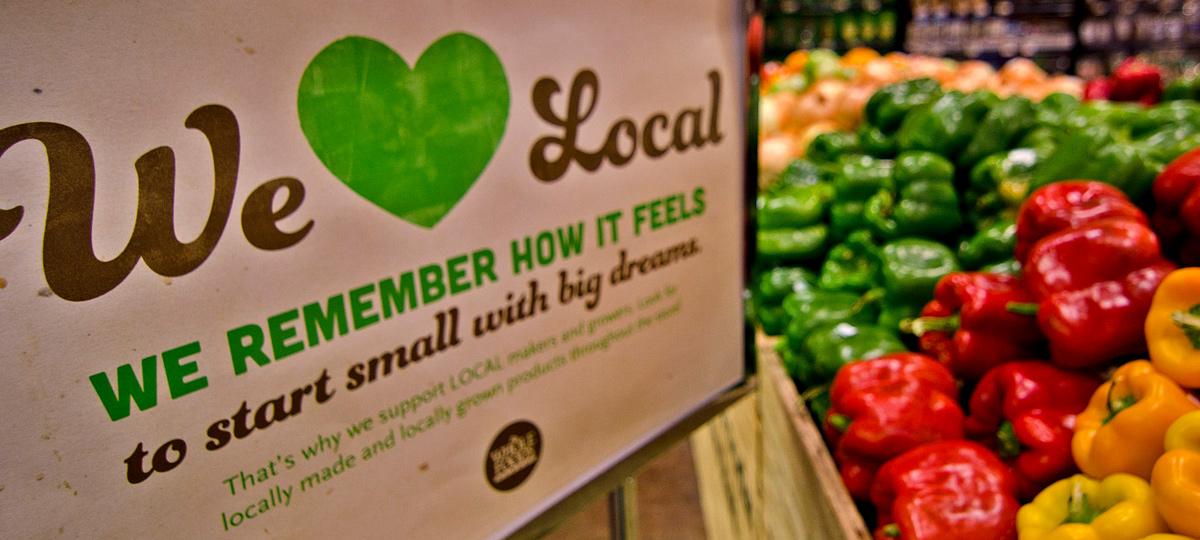
Midsize farms are "just right" for large-scale food buyers
At the same time midsize farms are disappearing, consumer attitudes about food are changing. More consumers are interested in healthy eating and want to know how their food is produced and by whom. This has led to the rapid growth of farmers markets, community supported agriculture (CSA) programs, local grocery stores, and "farm-to-fork" programs at restaurants, schools, and other institutions.
In Iowa, recent research suggests that consumers are often willing to pay more for local food. And there is great potential for growth in the local food market: Iowans spend more than $8 billion on food each year, and only 10 percent of that food is produced locally.
One way to keep more of Iowans' food dollars in state would be for more institutions (such as schools and hospitals) and "intermediate markets" (such as grocery stores and restaurants) to buy food from Iowa farms. This is already starting to happen: A 2008 study showed that local food purchases in eight Iowa counties had grown from 3 institutions spending $111,000 in 1998 to 25 institutions spending $1.8 million in 2008.
These large buyers could help keep midsize farms in rural communities—or bring them back—in Iowa and elsewhere. Intermediate and institutional buyers require both large volumes and a diversity of foods. Neither small farms (which lack the capacity) nor large farms (which lack the flexibility) can meet this demand in places like Iowa. This leaves midsized farms as untapped resources in the local food movement.
Large-scale food buyers + midsize farms = more farms, jobs, $ for Iowa
Using data from surveys conducted by the Leopold Center at Iowa State University in 2012 and 2013, the report estimated the following impacts from increases in institutional and intermediate food purchases from midsize farms:
- If just 25 percent of intermediate and institutional markets in Iowa purchased local food at the same level as survey respondents, this would generate more than $800 million annually for the state's economy. At 50 percent, that figure jumps to $1.67 billion, and at 100 percent, more than $3 billion.
- If half these local food purchases were sourced from midsize farms, between 4,249 and 16,997 such farms could be supported. Even the lower figure would mean the return of nearly 75 percent of Iowa midsize farms lost between 2007 and 2012.
- Such sales could support between 44,000 and 178,000 total jobs in Iowa, including 12,000 to 49,000 full-time farm jobs and 1,400 to 5,500 buyer-based jobs.
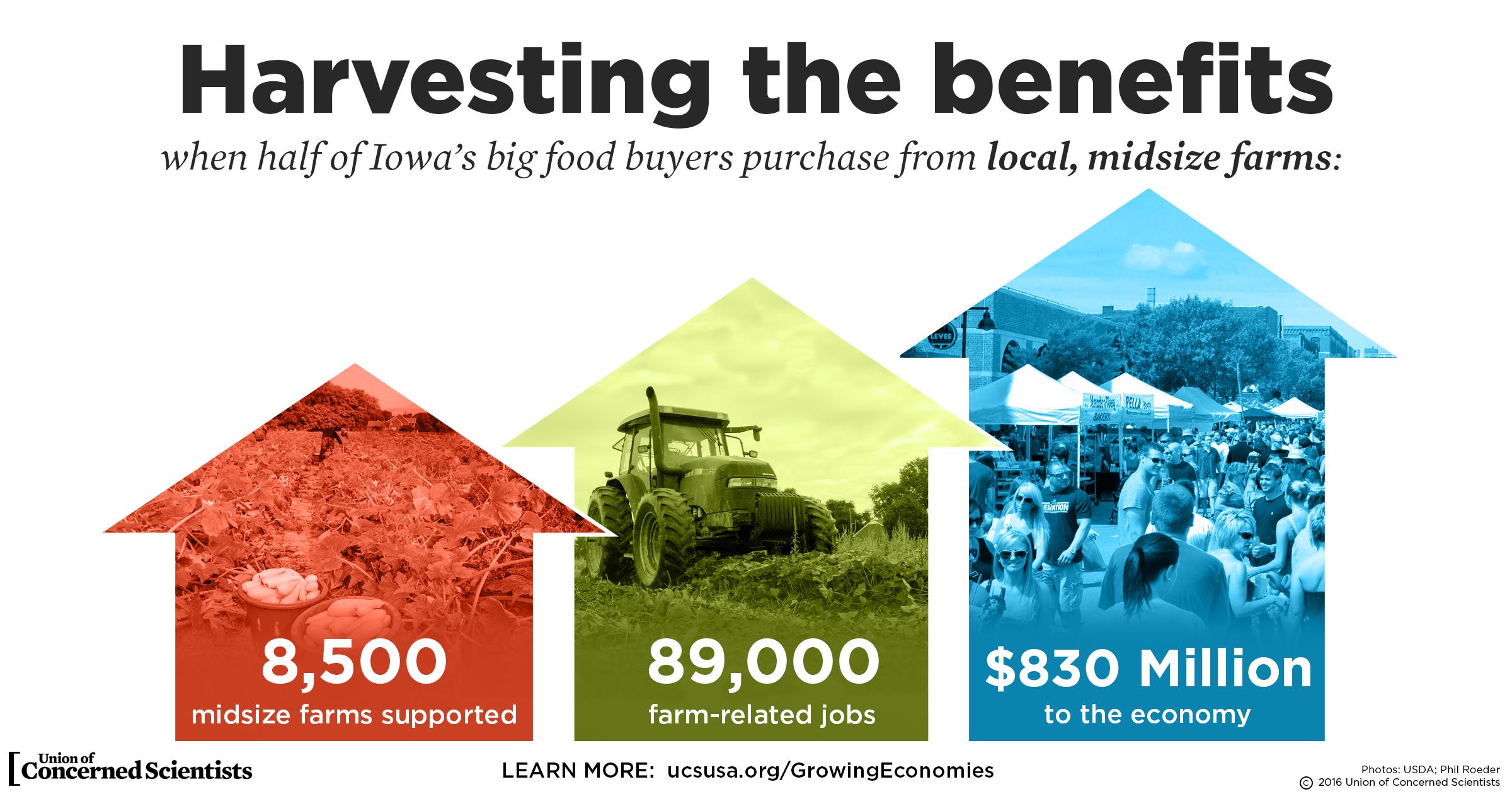
Policy recommendations
At this point you might be asking, "if the demand is there and midsize farms are well positioned to meet it, why isn't this happening already?" The answer is that the path is not yet cleared for farmers looking to establish new midsize farms, or for existing commodity farms to transition to this kind of farming. There are many challenges to be overcome, including opportunity costs for transitioning farmers, the difficulties of adopting new methods and different equipment, and lack of access to capital or crop insurance.
Since the growth of midsize farms serving local markets could provide many benefits to communities, it's in the public interest to help farmers get over these barriers. To do this, UCS recommends that future federal food and agriculture policies incorporate and emphasize the following:
- Financial incentives to help beginning and transitioning farmers grow the foods institutional and intermediate buyers want.
- Research and technical assistance to help farmers adopt midsize, diversified farming systems.
- Investments in infrastructure and coordination to get healthy food from farm to market.
- A comprehensive national food and farm policy that incorporates the above recommendations.
